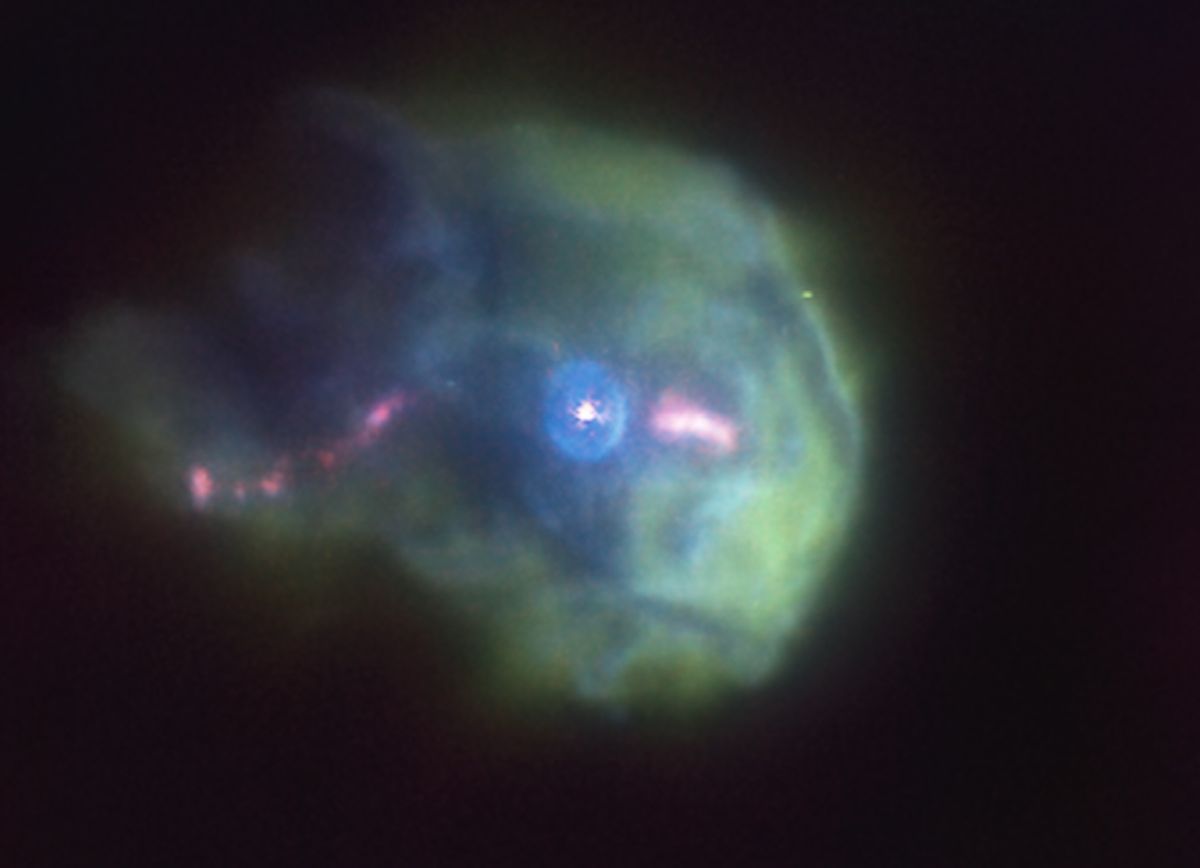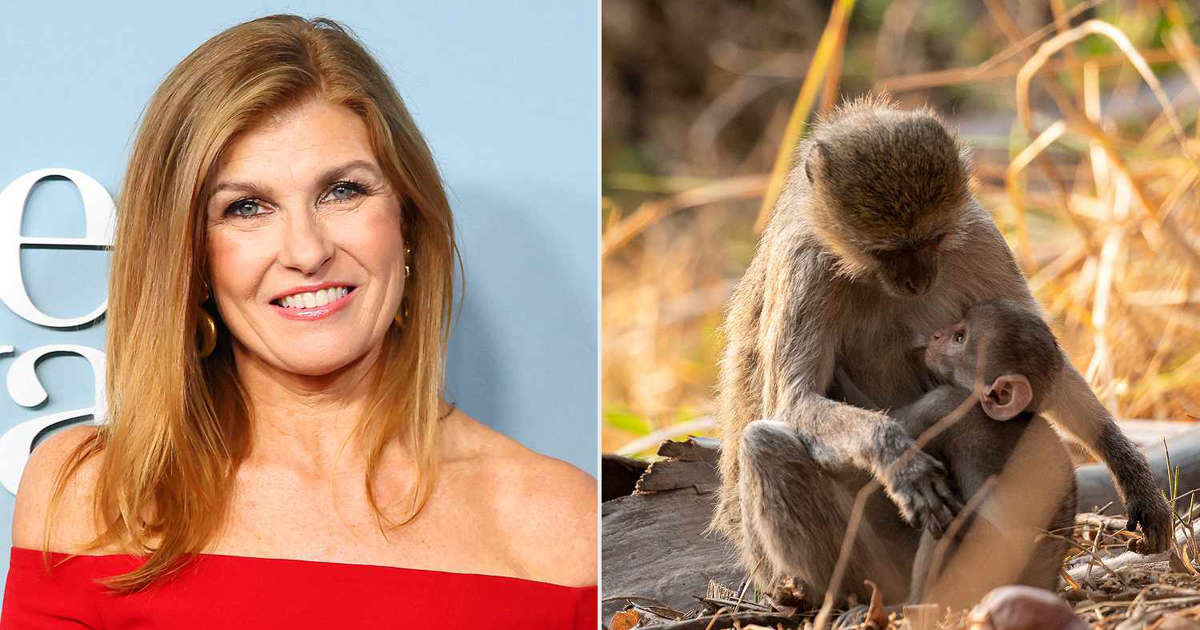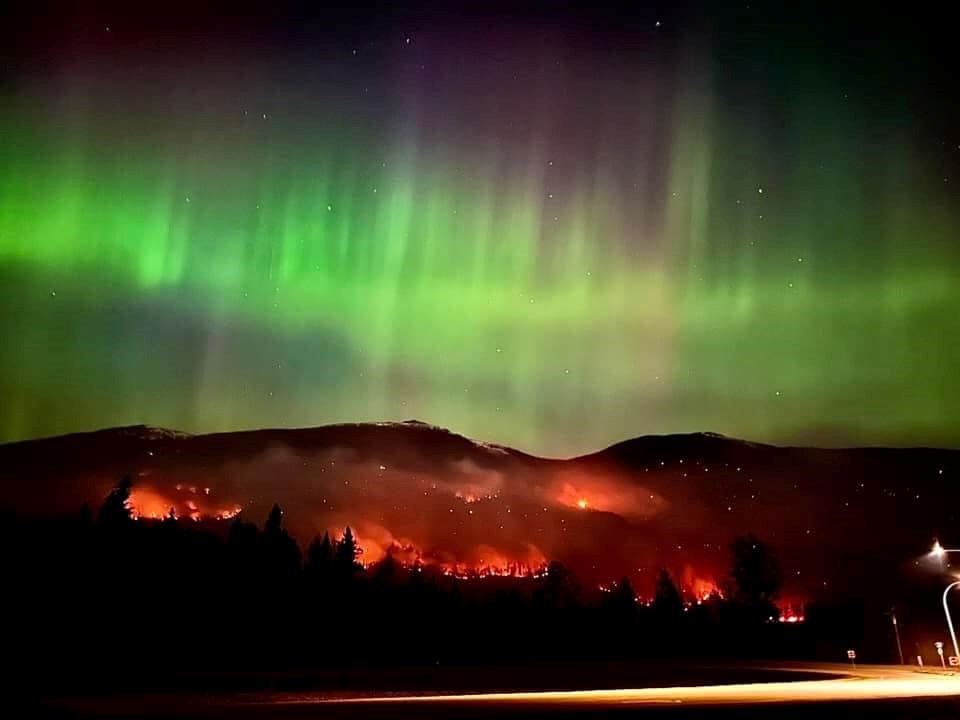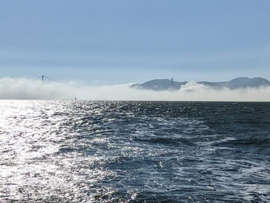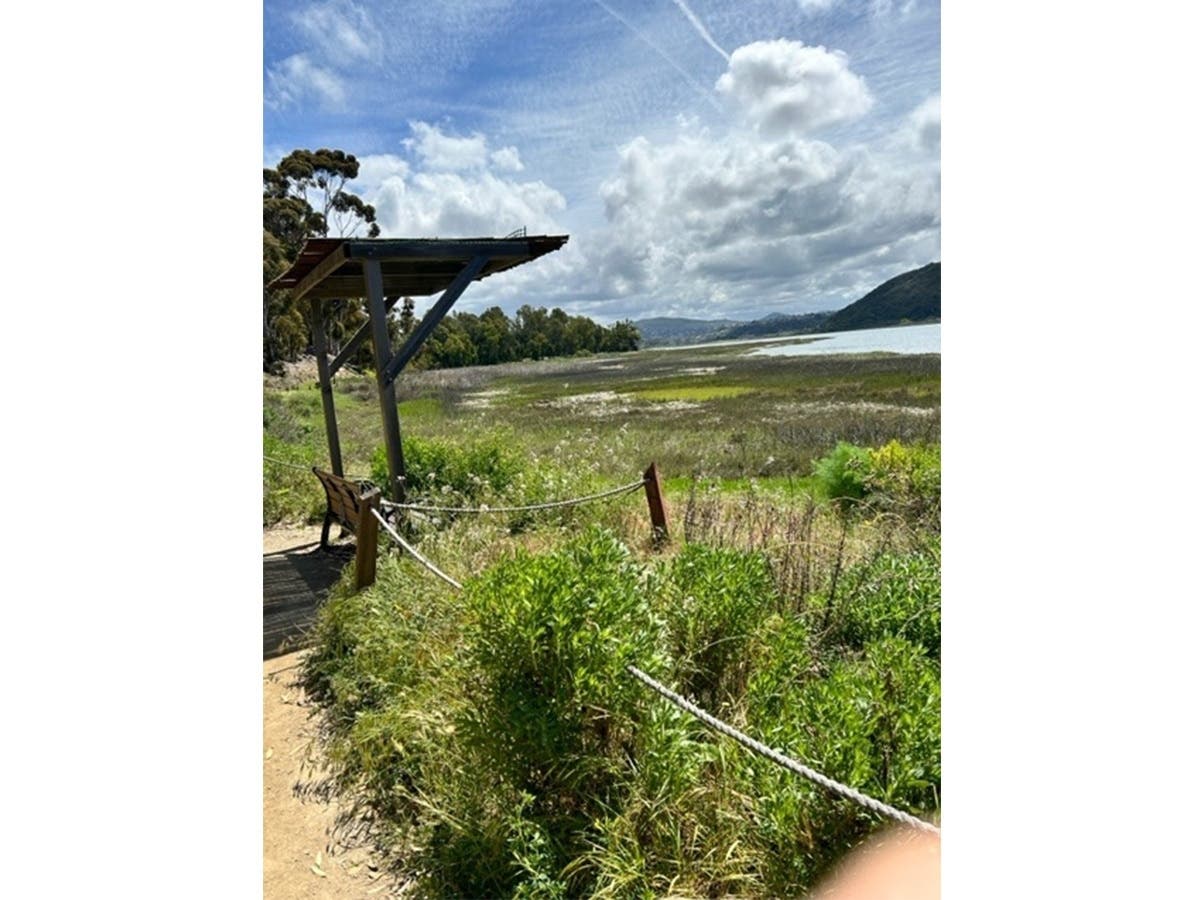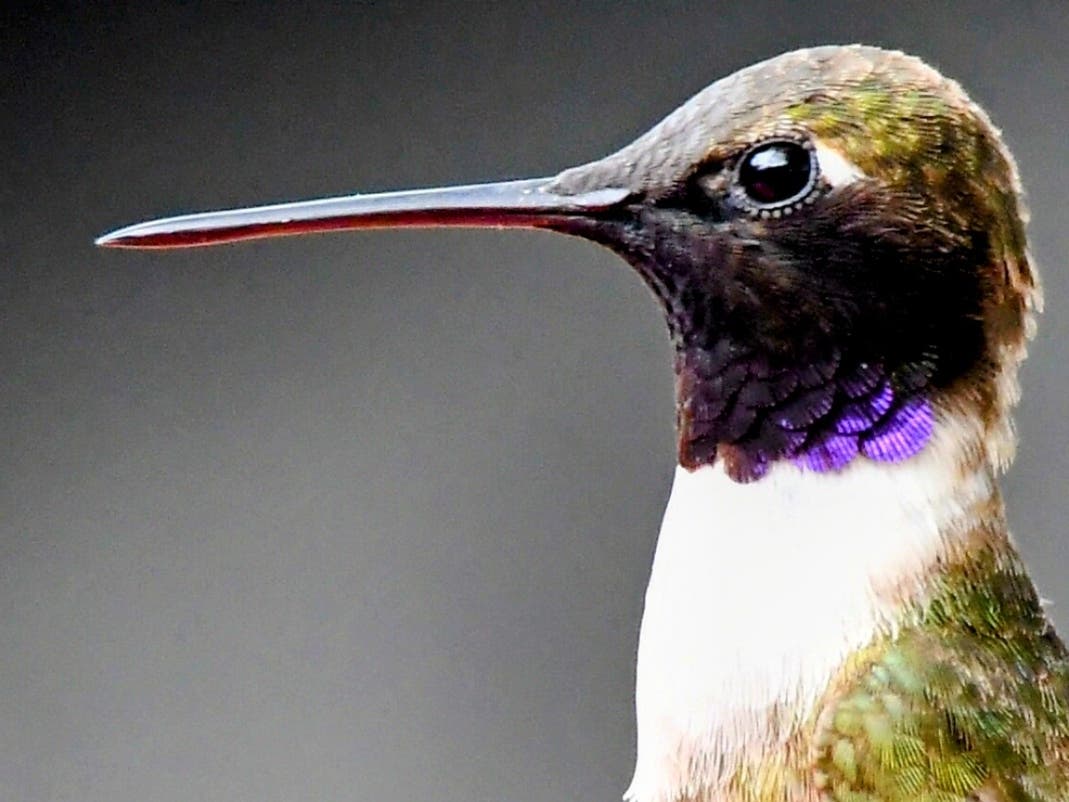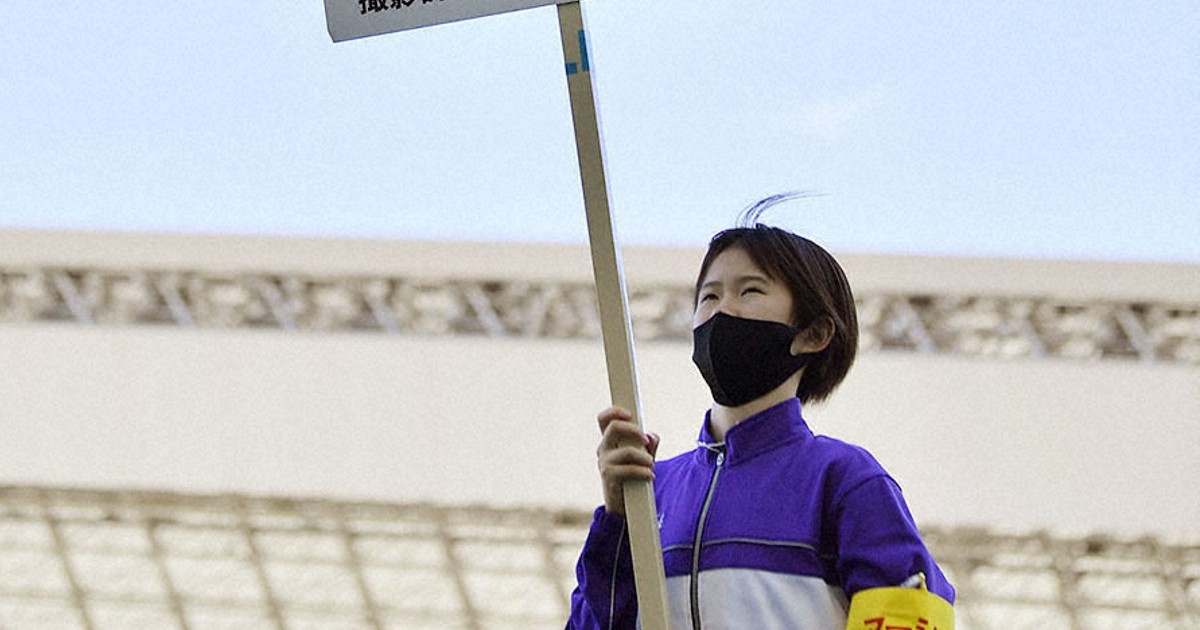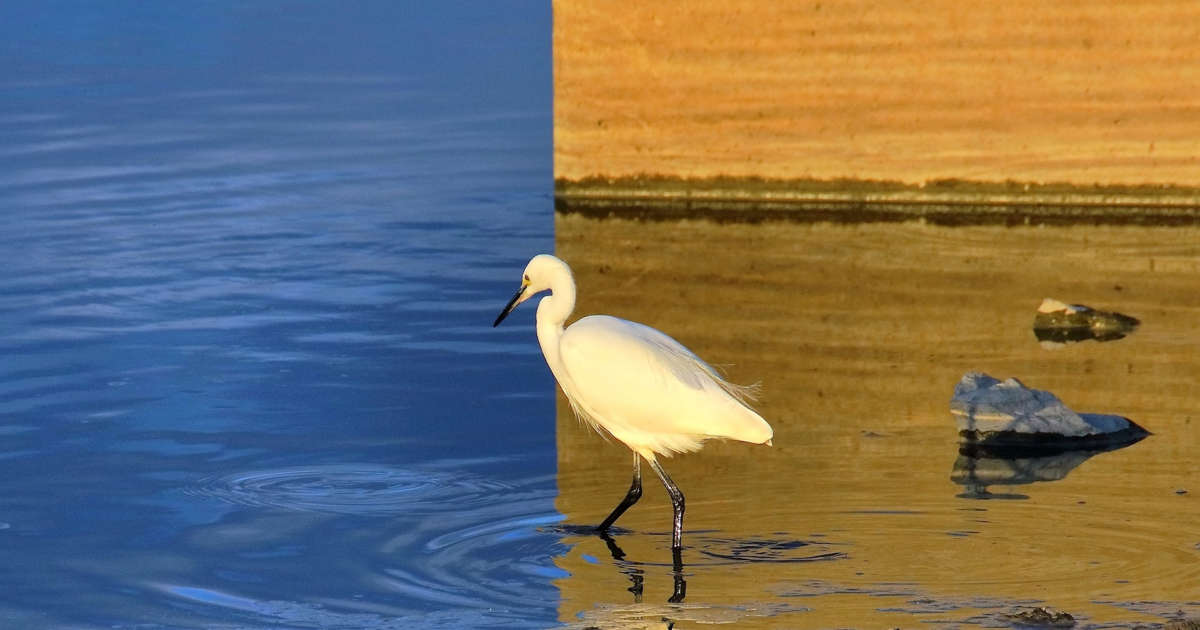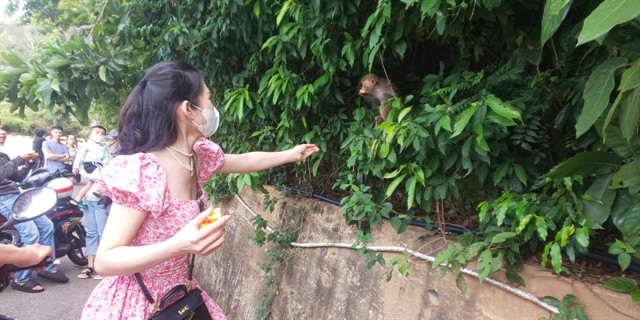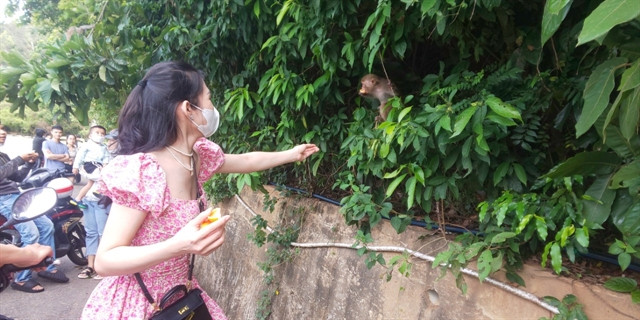 |
| A visitor feeds food to a monkey in the Sơn Trà Nature Reserve in Đà Nẵng City. Feeding wild animals has caused alarm in the reserve. Photo courtesy Thanh Ngọc Trúc |
Human activity at the reserve, including feeding wildlife, rubbish disposal, vehicle noise, illegal logging and hunting by traps, has caused alarm.
Between January and April, 459 traps were found on the reserve and 500 illegal trespass cases were reported to the inter-forest protection sub-department of Sơn Trà-Ngũ Hành Sơn.
 |
| A clamp trap and a limb of a monkey are found in the Sơn Trà Nature Reserve by volunteers. Traps have increased in the reserve in recent months, and many monkeys are killed by them. Photo courtesy of Ngọc Trúc |
At least eight monkeys were found living at the Linh Ứng Pagoda reserve with serious injuries or missing limbs, and motorcyclists had killed six others. At the same time, several tourists, including children, have been bitten by monkeys.
About 10 herds of monkeys (about 200 individuals) often gather to seek food from residents near the Intercontinental Đà Nẵng Sun Peninsula resort, Linh Ứng Pagoda and Lê Văn Lương Street.
Among them, five herds with 20 monkeys are found staying on the roadside of Lê Văn Lương Street, where they easily find fruits and snacks displayed at a temple on the first and 15th lunar day of a month, conservationist Trần Hữu Vỹ tells Việt Nam News.
Vỹ says these herds of monkeys do not return to the jungle as they can get human food like cakes, snacks and even rotten fruits from unaware residents and tourists.
“Some of the monkeys are obese and lazy,” Vỹ says. “They became aggressive and snatched food and things from visitors at a close range. Monkey mothers are found sitting and waiting for food from passers and monkey babies would mimic bad actions.”
He says monkeys can catch flu and gingivitis from humans, transmitting rabies virus through bites in return.
Monkeys also seek food at dustbins on the roadside and break into households to take food from kitchens and gardens, he says.
Vỹ, director of the GreenViet biodiversity conservation research centre, an NGO, says human activities in the Sơn Trà Nature Reserve would change the basic instincts of monkeys and threaten the primate population with human food.
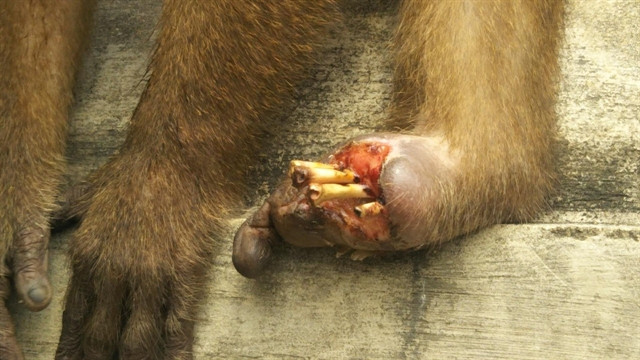 |
| A limb of a monkey probably injured by a trap or hit by a car in Sơn Trà Nature Reserve in Đà Nẵng City’s Sơn Trà Peninsula. Photo courtesy of Thanh Trúc |
He says human food and rotten leftovers pollute the jungle and could lead to the extinction of some species in the reserve.
Snares
Thanh Ngọc Trúc, a volunteer, who has been campaigning for the protection of monkeys in the reserve since 2016, says local rangers often found traps and illegal snarers.
She says about 20 clam traps were removed on a 200sq.m area in her three-day check, and she witnessed 10 monkeys suffering serious wounds or limbs cut by traps or traffic accidents.
“Clam trap, or so-called the ‘Jaw of Devil’, is the most dangerous snare that wild animals would be killed or cutting themselves limbs for escape,” Trúc says. “None of the larger animals, including wild boar, weasel, and squirrel, could survive if they get in the trap.”
“Traps can be easily found at farming tool shops, or hunters make snare loops from steel wire.
“Illegal hunters disguised as fishers or farmers set up snares in the reserve. Three checkpoints have been set up on the reserve, but no check on their bags or entrance permission in the reserve.”
Trúc, an IT technician who acts as a wildlife protection communication volunteer, says illegal loggers and hunters often infringe into the reserve outside of the official patrol time of rangers (between 17.30pm and 18pm, or between 11am and 12am).
She says illegal loggers also seek medicinal herbs, rattan and logs from the reserve for money.
Trúc says she and three other volunteers remove traps, rescue wildlife and post information on illegal violations in the reserve to the city’s urban management Facebook.
 |
| A monkey skull is found in a trap in the forest of Sơn Trà. Monkeys get trapped and die as the hunters did not return to the trap. Photo courtesy of Ngọc Trúc |
Head of Sơn Trà-Ngũ Hành Sơn forest protection sub-department, Ngô Trường Chinh, says only eight rangers manage patrol on 3,791ha of the reserve core zone.
He says more than 100 trips had been held in the first quarter of 2023 to remove more than 400 traps and three tents in reserve, but none of the illegal hunters or snarers was caught with their hands.
Chinh explains that illegal snarers could trespass into the reserve by different paths and unofficial shortcuts that rangers fail to detect.
Actions
Vỹ says if people stopped feeding monkeys they would turn to the forest, where they can find abundant food in nature.
He says this is an easy solution before a comprehensive scientific solution in wildlife conservation on the reserve is found.
“If monkeys can not get human food, they must seek food in their natural habitat,” he explains.
He says all entrances to the reserve must be checked by guards at main checkpoints to ensure friendly purposes from visitors.
“The 4,400ha Sơn Trà Nature Reserve should be recognised as a UNESCO world biosphere site to promote eco-tourism services while protecting the rich biodiversity of flora and fauna,” he suggests.
“There has yet to be a survey on the monkey population, but more than 1,000 monkeys live in the reserve.”
The reserve, 10km from Đà Nẵng’s downtown, is unique in Việt Nam and the world, with its biodiversity ranging from primary forests to ocean dunes, with more than 1,000 plants and 370 animal species.
The site is home to 1,300 red-shanked douc langurs, which were declared critically endangered by the International Union for the Conservation of Nature (IUCN) in 2013.
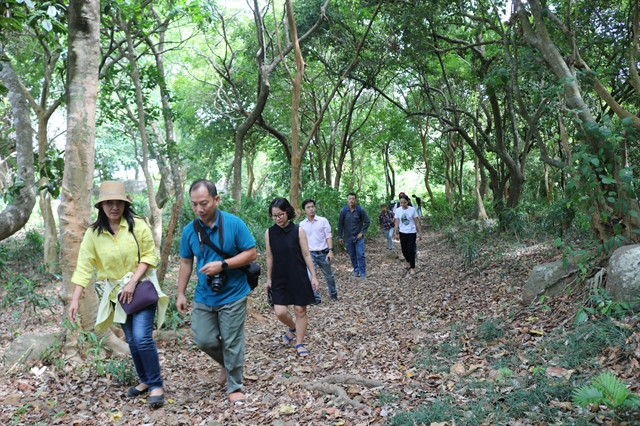 |
| Visitors join an eco-tour track in the primary forest of Sơn Trà. The reserve hosts around 10,000 visitors a month. VNS Photo Công Thành |
The reserve is currently managed by different agencies, including the Sơn Trà-Ngũ Hành Sơn forest protection sub-department; Thọ Quang Ward’s administration; Sơn Trà Peninsula’s management board of Beaches and Tourism; and the Border Guard, Air Defence and Navy.
Each agency only manages one assigned area, but an overall management board has not been set up.
The city has approved a plan through 2030 for the protection of biodiversity in Sơn Trà Nature Reserve. — VNS

